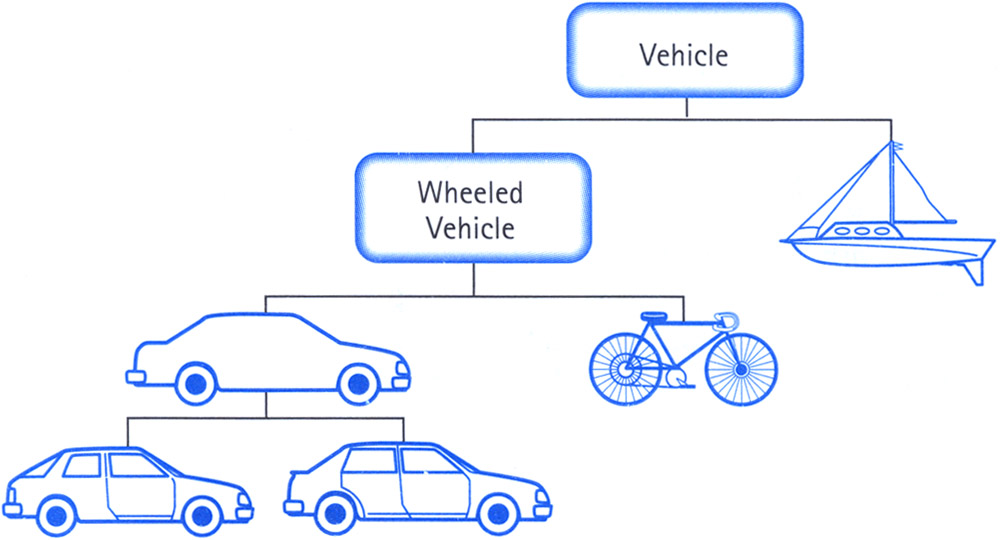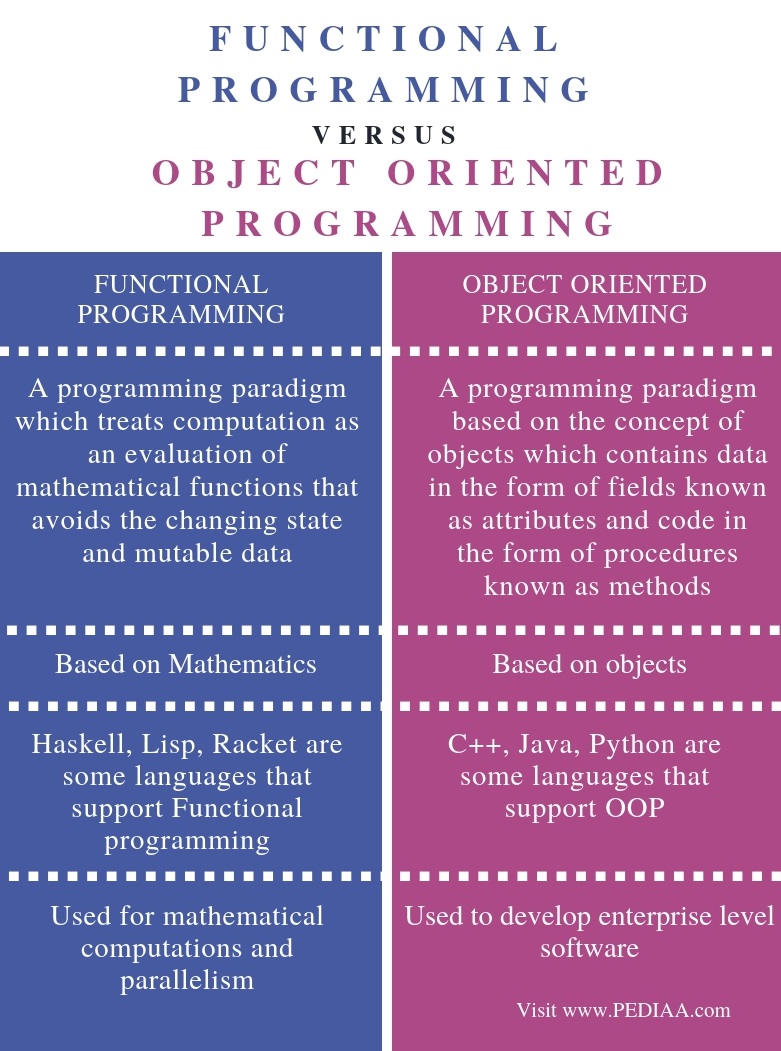
This is often because they will be used for various programming methods. The program will determine which usage is critical for every execution of the thing from the parent class which reduces code duplication. It also allows different kinds of objects to interact with the same interface. It took me some time to really understand it's importance in programming. But this also doubled as an opportunity for me to learn its key concepts, and know how important it is for a developer's career and being able to solve challenges. One concept that is common among many programming languages is Object Oriented Programming.
Object-oriented concepts
Our PersistenceManager class depends on InvoicePersistence instead of the classes that implement that interface. We can now pass any class that implements the InvoicePersistence interface to this class with the help of polymorphism. If our boss asks us to add another database and have 2 different types of databases like MySQL and MongoDB, we can easily do that. If our class design obeyed the Open-Closed principle we would not need to change this class. Modification means changing the code of an existing class, and extension means adding new functionality.
Dive Into Design Patterns
A Data Scientist Should Know At Least This Much Python OOP - Towards Data Science
A Data Scientist Should Know At Least This Much Python OOP.
Posted: Fri, 29 Mar 2019 16:58:12 GMT [source]
The pattern is particularly useful when you need to implement undo/redo functionality or save and restore an object’s state. It turns a request into a standalone object with its own class, parameters, and methods to invoke the request. Allowing for the sender to issue requests without needing to know the specific operations or the receiver’s class. The Proxy Pattern is a structural design pattern in object-oriented programming.
Structure of OOP
Inheritance is a mechanism that allows a class to inherit the attributes and methods of another class. In simple terms, child classes get attributes and behaviors from parent classes. Mastering object-oriented programming requires understanding the fundamental principles and best practices, as well as how and when to use common design patterns. Remember, the ultimate goal of mastering OOP is to write code that not only works, but is also clean and manageable.

In this article we will go over Object Oriented Programming (OOP) as a whole, without relying on a particular language. You'll learn what it is, why it's so popular as a programming paradigm, its structure, how it works, its principles, and more. Although most programming languages have some similarities, each one has specific rules and methods which makes it unique. Mastering the concepts of object-oriented programming is essential for any software developer looking to create efficient, maintainable, and scalable software systems. By understanding these core concepts, you will be well on your way to leveraging the full potential of OOP in your projects. The useExtraAbility() method is defined in the child SpecialIronMan class, so objects created from the SpecialIronMan class, like a suit with invisibility, have access to the useExtraAbility() method.
Advance your career with an online degree
Inheritance can be performed by cloning the maps (sometimes called "prototyping"). Object-oriented design (OOD) is the process of planning a system of interacting objects to solve a software problem. By defining classes and their functionality for their children (instantiated objects), each object can run the same implementation of the class with its state. The Dog class inherits the properties and behaviors of Animal class and can also have its own additional members. This code structure promotes code reuse and the modeling of relationships between different classes in a hierarchical manner.
Abstraction
If the method is called without any argument, it will log a message asking the user to specify a target. If the method is called with a string argument, it will log a message indicating that Iron Man is attacking the target with his current weapon. If the method is called with an object argument that has a name property, it will log a message indicating that Iron Man is attacking the object with his current weapon. The state of an object is determined by the data in its attribute fields. For instance, an Iron Man suit with different features might be treated differently in various situations.
Every time you create a new Dog object, .__init__() sets the initial state of the object by assigning the values of the object’s properties. This principle is the first principle that applies to Interfaces instead of classes in SOLID and it is similar to the single responsibility principle. It states that clients should not be forced to depend upon interface members they do not use. This means that the interface should have the minimal set of methods required to ensure functionality and be limited to only one functionality.
Python Programming Language. Python is an interpreted, high level… by Samuel Owino - DataDrivenInvestor
Python Programming Language. Python is an interpreted, high level… by Samuel Owino.
Posted: Tue, 02 Mar 2021 12:29:12 GMT [source]
Let’s use an example to understand – modeling different types of animals. We will have a base class Animal representing shared properties and behaviors, and derived classes like Dog and Cat that specialize the general Animal class. Attributes created in .__init__() are called instance attributes. An instance attribute’s value is specific to a particular instance of the class. All Dog objects have a name and an age, but the values for the name and age attributes will vary depending on the Dog instance.

If you don’t use IDLE, you can run the example code from the editor and environment of your choice. I hope this has explained what the four pillars of object-oriented programming are, and how they lead to cleaner and more robust code. Don't inherit from somewhere completely unrelated because there's one method or property you need. Inheritance lets one object acquire the properties and methods of another object. It's a very simple example, but the first approach abstracts away the logic into the machine. But the second approach forces the user to understand how to make coffee and essentially make their own.
In OOP, we create classes that serve as blueprints for constructing objects. Objects are instances of these classes, and they interact with one another using methods that define their behavior. This structure emphasizes modularity, reusability, and maintainability, which I found to be incredibly helpful when working on larger, more intricate projects. However, the true potential of OOP wasn't fully realized until the 1980s, when the Smalltalk language emerged. With its innovative design, Smalltalk made OOP more accessible and versatile, leading to its widespread adoption. Since that pivotal moment, numerous programming languages have embraced OOP principles, including Java, C++, Python, and C#.
The Visitor Pattern used in situations where you have a set of objects with different types or classes and you want to perform a common operation on all of them. The Observer Pattern is a behavioral desing pattern in object-oriented programming. It defiens a one-to-many dependency between objects so that when one object (the subject) changes its state, all its dependents (observers) are notified and updated automatically.
The most common is known as the design patterns codified by Gamma et al.. More broadly, the term "design patterns" can be used to refer to any general, repeatable, solution pattern to a commonly occurring problem in software design. Some of these commonly occurring problems have implications and solutions particular to object-oriented development. The Document Object Model of HTML, XHTML, and XML documents on the Internet has bindings to the popular JavaScript/ECMAScript language. JavaScript is perhaps the best known prototype-based programming language, which employs cloning from prototypes rather than inheriting from a class (contrast to class-based programming). Here, the class car has properties car_id, colour, engine_no, and distance.
The pattern allows a client to choose and use an algorithm from a family of algorithms at runtime. It separates the algorithm from the client, making the algorithm’s implementation details hidden from the detail. For example, imagine Iron Man has a special suit with extra abilities.

No comments:
Post a Comment